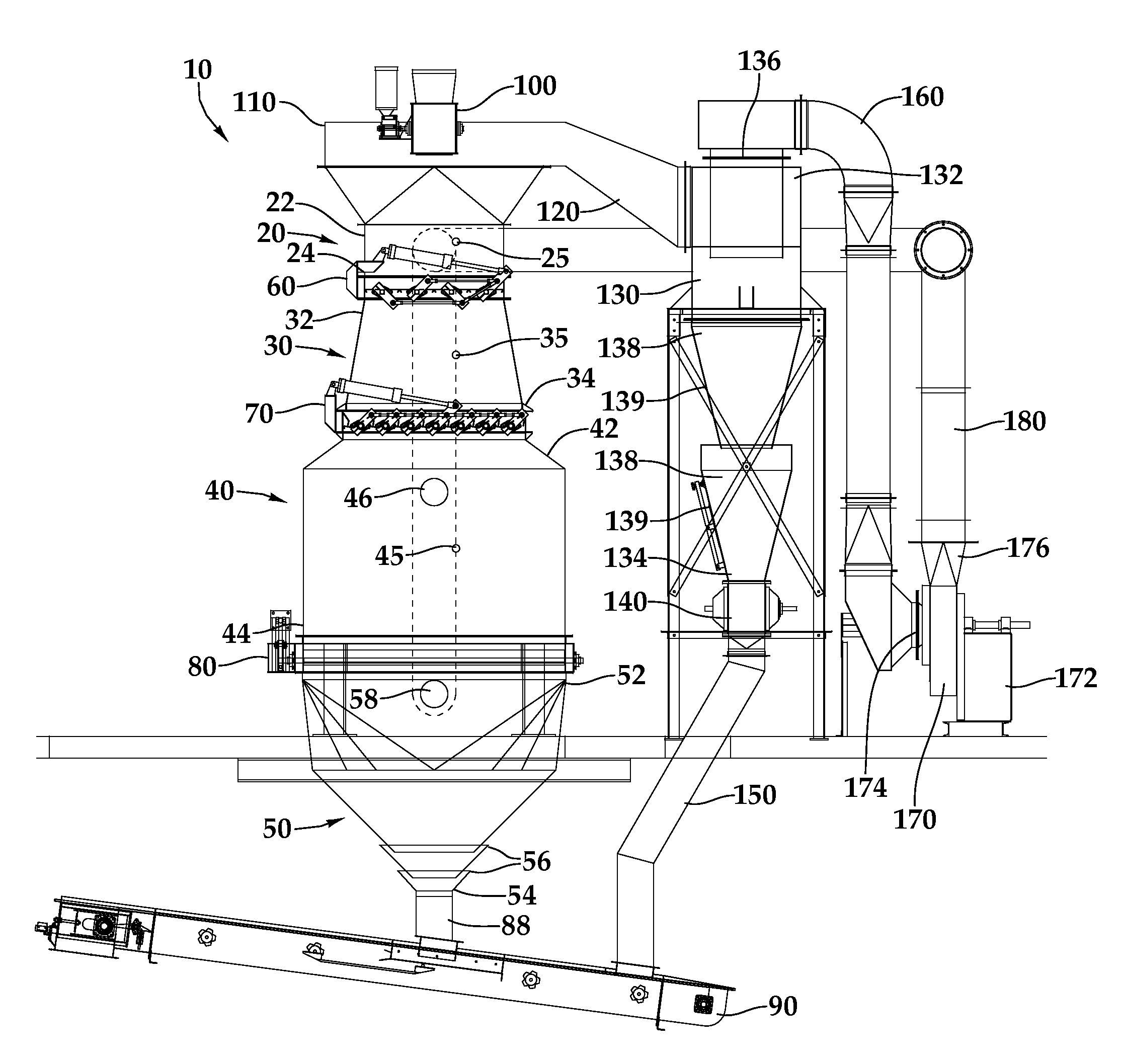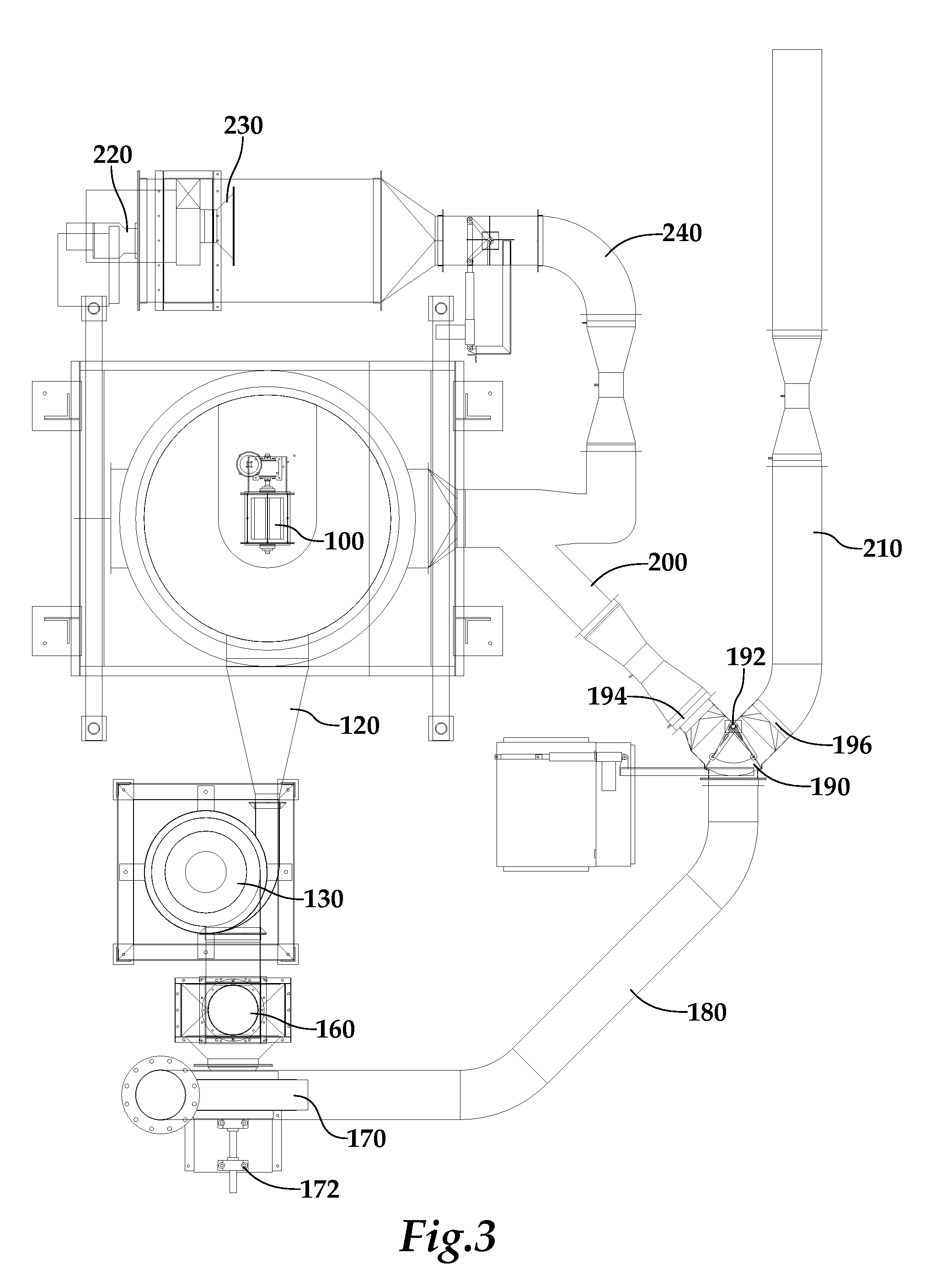Dryer/Cooler Process and System
- Summary
- Abstract
- Description
- Claims
- Application Information
AI Technical Summary
Benefits of technology
Problems solved by technology
Method used
Image
Examples
example 1
Conventional Horizontal Dryer / Coolers for Pelleted Product
[0087]A product such as animal feed having a starting moisture content of about 11% may be steam conditioned and pelleted to form a product having a moisture content of about 17% (or about 16.96%). Steam may be used both as a lubricant and a bonding agent. For a process in which about 8 tons of product per hour is pelleted, dried and cooled, about 1,150,000 BTU / hr of energy are added to the product during the pelleting process through both steam conditioning and, to a substantially smaller degree, through friction.
[0088]In order to dry the product to a final, predetermined, moisture content of about 9%, conventional dryer / coolers generally operate by heating air to about 300° F. using a burner or other means and then using a large fan to circulate this heated air over the product. For a pelleted product moving through these dryers at a rate of about 8 tons / hour, these prior art dryers may typically require adding an additiona...
example 2
Inventive Dryer / Cooler System and Process for a Pelleted Product
[0090]As with conventional systems, the system and process described above may add about 1,150,000 BTU / hr to the product during the pelleting process through steam conditioning.
[0091]To reduce the pelleted product from about 17% to a final moisture content of about 9% requires removing about 1,280 lbs water per hour (8% difference from a starting weight of 16,000 lbs of product per hour times 8 tons / hr). The latent heat of evaporation for water at a boiling point of 212° F. is about 970.3 BTU / lb water. Therefore, this removal would require about 1,280×970.3, or about 1,241,984 BTU / hour. By taking advantage of the heat added to the product during the pelleting process, this system and process may require about 1,241,984−1,100,00=141,984 BTU / hour or about 142,000 BTU / hour be added to the system. By another calculation, the 2% difference from the 11% starting moisture and the 9% final moisture may require about 310,496 BTU...
example 3
Conventional Horizontal Dryer / Coolers for Extruded Product
[0096]As with pelleted product, extruded products may have an initial moisture content of about 11 %. In this case, the extrusion process may result in a product having a moisture content of about 21%, which results in about 1,410,533 BTU / hr being added to the product. This product may enter the process or system 10 at a starting temperature of about 200° F.
[0097]Due to the consistency of the extruded product and the need to keep it moving during drying so as to avoid product clumping, conventional systems may use at least about 10,000,000 BTU / hr to dry the product. In addition, to keep the product moving and substantially fluidized, larger, more powerful fans may be required than those used for pelleted products. For example, a conventional system may employ two 100 horsepower dryer fans, a separate 75 horsepower cooler fan, and two 50 horsepower burner fans, for a total requirement of 375 horsepower.
PUM
 Login to View More
Login to View More Abstract
Description
Claims
Application Information
 Login to View More
Login to View More - R&D
- Intellectual Property
- Life Sciences
- Materials
- Tech Scout
- Unparalleled Data Quality
- Higher Quality Content
- 60% Fewer Hallucinations
Browse by: Latest US Patents, China's latest patents, Technical Efficacy Thesaurus, Application Domain, Technology Topic, Popular Technical Reports.
© 2025 PatSnap. All rights reserved.Legal|Privacy policy|Modern Slavery Act Transparency Statement|Sitemap|About US| Contact US: help@patsnap.com



